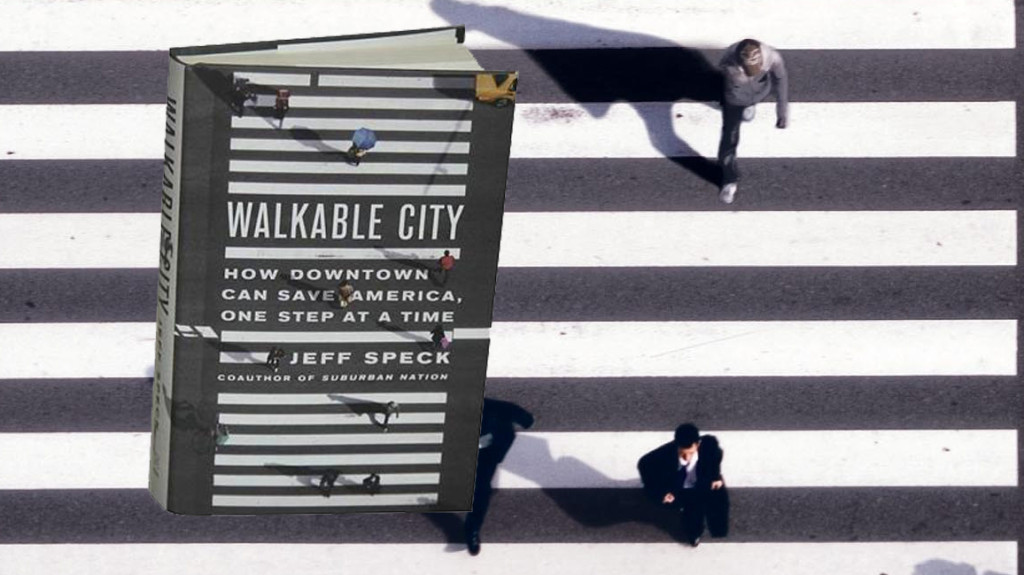Housing and community are hot topics in the media today for good reasons. Have you seen the price of housing and rent in urban areas rise in recent years? The price of housing has led to new development further and further away from our work. I’ve seen it and experience it first-hand. I’ve seen a rapid increase of Millennials and Gen-X professionals move into urban areas in Oakland and San Francisco, raising rents to unheard of rates. The recession has recovered rapidly in the Bay Area, with young millionaires paying top dollar to move into established neighborhoods that now fight over gentrification. Why is it that Millennials want to move into areas where they can’t even park a car?
[pullquote align=”left” cite=”” link=”” color=”” class=”” size=””]Anyone who drives on our freeways in California should fear a 26% increase in traffic. Our aging transportation system probably can’t handle this increase.[/pullquote]
I came across the book Walkable City by Jeff Speck and immediately connected to his Ten Steps of Walkability. Most of us still commute to work every day, and Speck believes that this is much more dangerous than living in a city with high crime rates. The Association of Bay Area Governments (ABAG) estimates that population will increase by 26% in Alameda County in the next 20 years. According to the Metropolitan Transportation Commission (MTC), the seven bridges in the Bay Area currently see 125-130 million cars every year. Anyone who drives on our freeways in California should fear a 26% increase in traffic. Our aging transportation system probably can’t handle this increase.
Our landscape is constantly changing and expanding. New communities are continually being built, but could we be designing them better? What is the Walk Score of your community? If you don’t know, I’m sure the realtors in your area do. An ideal area has great access to transit, walkable access to shopping and errands, and good bike lanes. Why not build the Walk Score into new developments or into redevelopment?
[pullquote align=”right” cite=”” link=”” color=”” class=”” size=””]I’ll be leading a book group at the MMANC Annual Conference in Sacramento from 5-6 pm on Thursday October 15th. Pick up the book Walkable City by Jeff Speck at your local library or at a bookstore. Let’s create a discussion on how urban planning can change our cities; making our citizens healthier, happier, and more productive.[/pullquote]
Speck looks at Portland, Oregon as an example of a city that purposely invested in bike lanes. Although bike lanes may seem like a large expense, Speck argues that the cost of bike lanes is miniscule compared to the money we currently spend on our highways and roads. Some people may argue that we should invest more in technology. Technology was supposed to make us have more free time, and spend less time on the road. How many of us have had to move further and further away just to afford a place to live? We now spend more time away from our families.
Getting back to my initial question of why Millennials want to move to urban areas. I’d like to discuss this further with people that have the position and influence to make a change in our communities.
Do you think that we should invest in making our communities more walkable and bikeable? How can we change the conversation among our communities and our peers?
I’ll be leading a book group at the MMANC Annual Conference in Sacramento from 5-6 pm on Thursday October 15th. Pick up the book Walkable City by Jeff Speck at your local library or at a bookstore. Let’s create a discussion on how urban planning can change our cities; making our citizens healthier, happier, and more productive.
Speck’s Ten Steps of Walkability:
-
Put cars in their place
-
Mix the uses
-
Get the parking right
-
Let transit work
-
Protect the pedestrian
-
Welcome bikes
-
Shape the spaces
-
Plant trees
-
Make friendly and unique faces
-
Pick your winners
